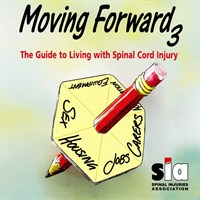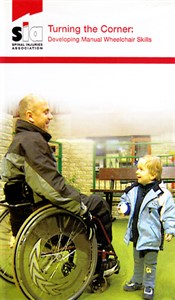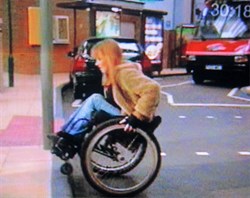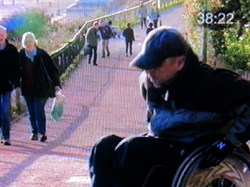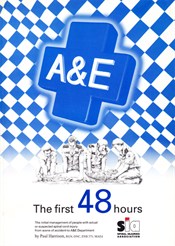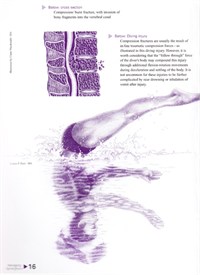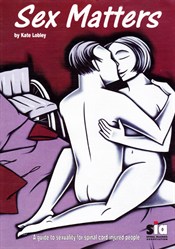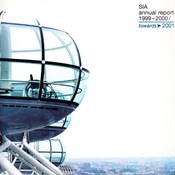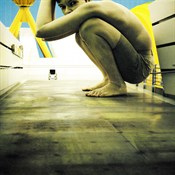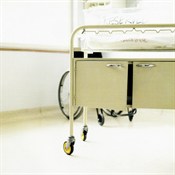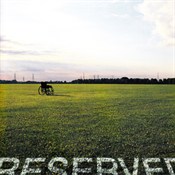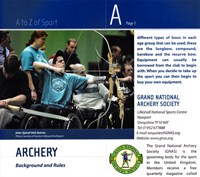Spinal Books and Videos
Every spinal cord injured person has been to the brink. The Spinal Injuries Association's role through its publications has always been to encourage people to look forward rather than back. One of the ways SIA did this was to produce comprehensive guides informing people how to live with spinal cord injury, as well as specific booklets and videos on one-off topics. The most challenging directory that I edited was Moving Forward 3.
As it implies, it was the third such updated compilation of information for spinal cord injured people. Lynne Punchard had produced the first two and was to produce the fourth version of this amazing compendium of life-facts for people adjusting to the emotional and physical consequences of their injury. The third of a million words in the 30 chapters, covered a huge range of topics including mobility, rights, drugs, skin care, wheelchairs, employment and getting older with spinal cord injury. It dealt with the questions 'Why me?' and 'Will I walk again?' and linked to hundreds of helpful organisations. It was a huge book that benefited from the invention of the CD-ROM that enabled spinal cord injured people to access the information from their PCs.
Wheelchair users had been early uptakers of the internet for obvious reasons. If people were stuck at home or in bed, then the internet was a great way to communicate with the outside world. And I worked with a lovely bunch of spinal cord injured people (thanks Dave le M, Simon R, Christine C) while setting up www.spinal.co.uk in 2000 and introducing things like a chat room, message boards and free virtual versions of factsheets and publications.
www.apparelyzed.com was set up soon after by SIA member, Simon Roulstone, who also designed the charity's logo (a man of many talents). As well as an amazing collection of personal experiences from spinal cord injured people worldwide he has set up this amazing, and I do not use the term lightly, collection of wheelchair users' videos on his YouTube site. Check out the radical acts of wheelchair users doing things that ambulant people would not think of, or be capable of doing.
One of my highlights at the Spinal Injuries Association, was producing the world's first wheelchair skills video. When I had worked as a continuity writer for the BBC, at the Milton Keynes Open University campus I had met a creative and thoughtful arts video producer, Tony Coe. He and his wife Mags had set up a film production company Two Cats Can (something about the difficulty of herding cats I think) and they filmed this one hour video for us.
Paul Smith*, the chief executive at SIA and a wheelchair user himself, had always wanted a film that showed people how to get the most out of their wheelchairs. By contacting all the major spinal charities around the globe for a formula to copy, it became apparent that no one had made such a film before. I found the ideal person to front this video teaching a group of wheelchair users in the Lake District.
Tomasz Tasiemski is a man who doesn't know the meaning of 'impossible'. This is a guy who was so severely disabled that he was left with only the use of his shoulders and forearms, a high level tetraplaegic. You will see from his web page here that he was determined to travel, have relationships, have a kid and share with others his formidable life force.
For our video, Tomasz, Senior Lecturer at the University School of Physical Education, Poznan, Poland, teamed up with Lone Rose, Senior Physiotherapist and Dot Tussler, Superintendent Physiotherapist at Stoke Mandeville Hospital to show people how to get the most out of their wheelchair and develop the essential chair skills to live an active life.
Turning the Corner showed how new wheelchair users should propel a chair, find the balance point for 'wheelies' that enable people to flip up the front wheels and go up dropped curbs and over rough terrain. It also showed the different functional levels of paraplegics and tetraplegics and how both could go up steep hills and ultimately do one of the most difficult things: get into a wheelchair from lying flat on the floor.
We filmed most of this in a mocked up street within a warehouse I found in Poole that is used to teach children road safety skills - see Streetwise. And for the final scene we filmed some shots of Tomasz heroically wheeling himself up the steepest hill path in Bournemouth. He refused to cheat and let us film him just at the bottom and then the top, he wheeled himself up the whole hill.
The other first
Was the set of three books I edited for the author Paul Harrison, Clinical Development Officer at the Princess Royal Spinal Injuries Unit in Sheffield. Paul had felt that a written explanation of best practice in dealing with people with suspected spinal cord injury, from the minute that an ambulance arrived at the scene of an accident, through their months of care in hospital and then the release back into the community needed to be made. Fellow professionals agreed as did the Spinal Injuries Association and over a period of six years we produced the trio of books.
One of the many causes of spinal cord injury is diving into shallow water. The kind of break or tear of the spinal column is portrayed in the cross section above the swimmer
Paul had to start from scratch as this hadn't been done before, anywhere. He was a trainer of nurses, a caring person who could see the point of view of the injured and was up-to-speed with the language and practice of the consultants. He was in a unique position in the middle of the treatment and caring process. He wrote what he could, and sought input and advice when needed. He ran it by the healthcare professionals within the eleven spinal injuries units and when he had agreement we laid out the chapters and I proofed them and had the illustrations made up.
In 2000, with funding from the National Lottery, SIA published The First 48 Hours. This 70 page book was for healthcare professionals working in the pre-hospital care area, as well as those in Accident and Emergency. Two artists, Louise Hunt and Claire MacDonald created the striking images that illustrated the book. The images had to be so good that people flicking through the pages could follow the positioning of the ambulance staff, for example, moving a person from scene of accident onto a spinal board by looking at the relevant picture.
In the same year SIA published Managing Spinal Injury: Critical Care thanks to funding from the Community Fund. This book reviewed the systemic effects of spinal cord injury and provided recommendations for manual handling, the prevention of pressure sores (the bane of paralysed people) and bladder and bowel management. In essence this covered the time that a patient spends in a hospital or spinal injuries centre, which could be anything from six to eighteen months -if they became tetraplegic.
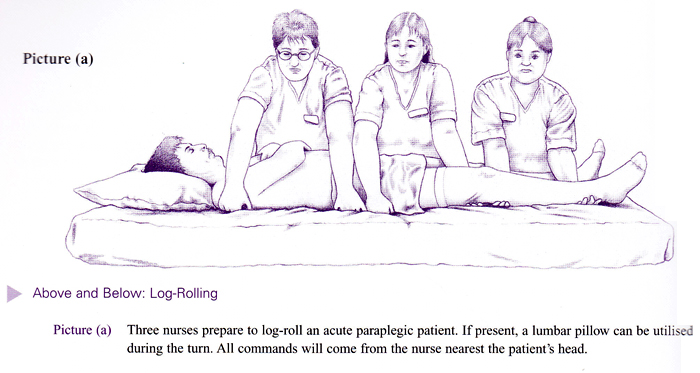
The third book Managing Spinal Cord Injury: Continuing Care was funded by Astra Tech and explained the long-term health and care needs of ex-patients, spinal cord inured people who were now living back in the community.
The world owes a debt of gratitude to Paul. These books went round the world as hospitals that didn't have such expertise could now follow in print the techniques that pioneering UK specialist centres had honed. SIA got letters from Palestine, Australia, all over really, thanking us for the quality and existence of the books. I see that they are still available from the Spinal Injuries Association and that they have sold out and updated the first book now.
The splendid cover picture was painted by Amanda Hutt who portrayed the couple so that you wouldn't know which (or both) was spinal cord injured
Among other highlights was the re-writing, by Kate Lobley of the sexuality guide Sex Matters. All people who have broken their back and become paralysed will lose bladder control and most will be affected in varying degrees with the mechanics and sensation of sex. This book was aimed at spinal cord injured people but was taken up by other disabled charities as relevant to disabled people in general.
Sexuality is just one of the areas that have to be dealt with after the seismic shock of paralysis. Kate, a counsellor and high-level tetraplegic herself, covered the whole gamut of sex and sexuality from overcoming prejudices, recovering sexual feelings, intimacy, positions, effects on libido, socialising and dating. To be honest, more than two-thirds of the book would be a wake-up call to non-disabled people too. She managed to capture the essence of how we get together (in all senses) in a practical and positive way.
It is the lot of any publications manager to produce an annual report. This can be one of the most pressured and diplomatic tasks of the yearly cycle as it is the one document that all departments are interested in appearing in! The report I did in 2000 was a pure joy though. We broke so many rules with this one thanks to the wonderful photographer and designer James Shearman.
James had just started working as an art director when he was in a road traffic accident that paralysed him from the waist down. As a new wheelchair user he was the ideal person to tell a story with pictures for the report. He shot his poignant images in London and called the photographic series New Life - a few pages from the report are shown below.
James wrote a paragraph to go with the images: "What I want to use this space for and what I hope these pictures convey is that only you can decide what you are going to do with your life. The injury is an element in a much bigger equation involving you and your life. If you want to do something there is always a way. You may never walk again but that doesn't stop you exploring this planet, some might not be able to have children but that doesn't stop you loving. There is no such word as "never". With family and friends and the SIA there are only possibilities waiting to be discovered."
Moving on
My five years with the Spinal Injuries Association came to an end when they relocated to Milton Keynes and I moved on to The Royal Academy of Engineering in 2005. My parting publication was Active! Sports, Leisure and Arts: a Directory for physically impaired people in the UK. This booklet captured all the can-do elements that SIA endeavours to promote. Its foreword was written by Tanni Grey-Thompson who became a wheelchair user at the age of seven and was to become a multi-gold winning Paralympic champion and then a Baroness. It was written by Sarah Stanwix, a ski karting tetraplegic, most of the photos were taken by wheelchair user Gordon Gillespie, and another tetraplegic Jonathan Kemp did the design and layout. The booklet was funded by the Rank Foundation and thousands were printed and circulated around the UK disability world.
Should I become paralysed, I don't feel that I could ever be as positive as the people I worked with like Pete, Danny or Sol. I don't think that I would have the patience or the tenacity to get back on my feet again, as it were, should I become spinal cord injured. But one never knows till it happens. So for the time being I'm grateful to be still on two feet and even more grateful for having spent very fruitful and formative years at the Spinal Injuries Association.
*Paul Smith was the chief executive of the Spinal Injuries Association from 2001 to 2014 and was one of those rare leaders who stuck to his principles. He believed passionately in supporting and empowering wheelchair users in all aspects of their rehabilitation and working lives. I worked with him at Luton's Disability Resource Centre and tipped him off about the Spinal Injuries Association vacancy when the previous CEO left at short notice. Paul wore many hats being an accomplished political activist, a champion fundraiser, a dedicated family man and a brilliant boss! Even years' after his premature death from cancer, lots of people recall his disability initiatives and the way he helped them personally. A Big Man!
